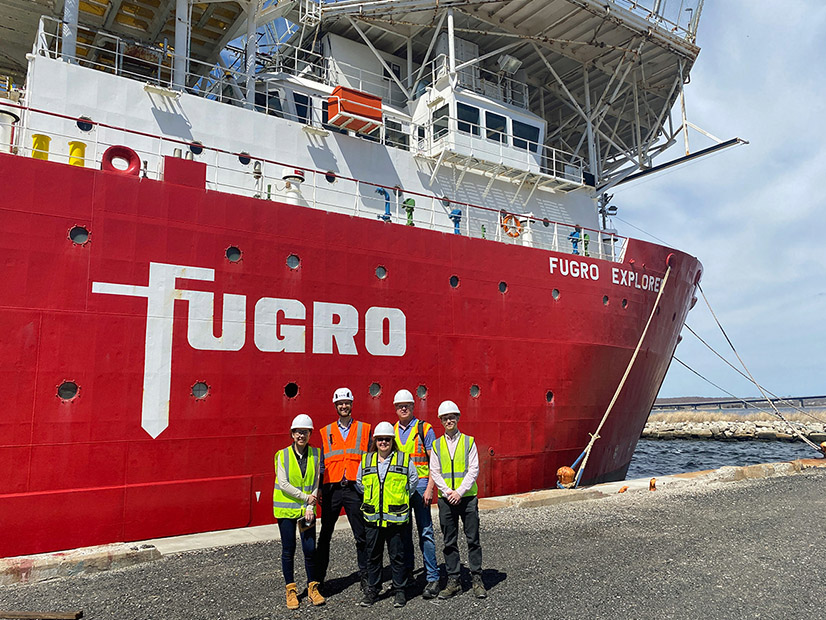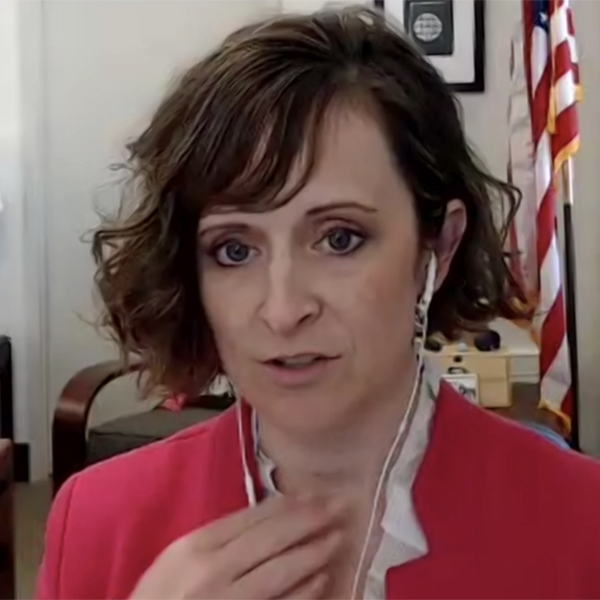
The U.S. Bureau of Ocean Energy Management on Thursday debuted its effort to better engage fisheries and their related stakeholders in the country’s offshore wind development process.
 Liz Klein, director of the U.S. Bureau of Energy Management, speaks during Thursday’s webcast. | National Academies of Science, Engineering and Medicine
Liz Klein, director of the U.S. Bureau of Energy Management, speaks during Thursday’s webcast. | National Academies of Science, Engineering and MedicineBOEM Director Liz Klein told the first meeting of the Standing Committee on Offshore Wind Energy and Fisheries that its input would be critical to informing the regulatory process, in which the agency plays a central role.
Potential impact on fisheries and ocean ecosystems has been one of the most contentious points in the drive to install thousands of towering wind turbines off the Atlantic, Gulf and Pacific coasts of the U.S.
Offshore wind is an emissions-free source of power, but its construction and operation will alter the marine environment to an unknown degree, as illustrated in a recent analysis by BOEM, the National Ocean and Atmospheric Administration and the Responsible Offshore Development Alliance. (See Report Flags Gaps in Scientific Knowledge of OSW Effects.)
That uncertainty has led to fear, resentment and litigation by the fishing industry and its advocates.
In an attempt to improve its engagement with the fishing community on offshore wind, BOEM earlier this year announced formation of the committee, established by the National Academies of Sciences, Engineering and Medicine.
Nearly 300 people signed up to watch the committee’s first meeting via webcast Thursday.
“We expect this committee to be an independent and credible forum to discuss pressing stakeholder concerns and relevant science knowledge,” Klein said.
The committee will seek a range of scientific expertise from a variety of disciplines, she said, as well as input from stakeholders such as tribal nations, commercial and recreational fisheries, non-governmental organizations, communities and the offshore wind industry.
“We know that fishing communities and other fisheries stakeholders are really critical to informing our offshore energy development process,” Klein said.
Offshore wind is an important part of the nation’s clean energy transition, she said, with President Biden having set a goal of 30 GW online by 2030.
“At the same time,” Klein said, “fishing is a crucial part of many of our nation’s coastal communities. It contributes to our food security, jobs and economic opportunity. And for many, it’s much more — it’s a way of life and national heritage.”
Fishing, she said, must not just co-exist with offshore wind but thrive alongside it.
Cumulative Impacts
The discourse during the meeting was polite but at times pointed.
Committee member Eric Kingma, executive director of the Hawaii Longline Association, asked whether BOEM would be seeking advice from the committee on individual OSW projects or be seeking more broad-stroke insight.
Klein said BOEM is seeking broad insight across multiple projects in a given region because “the goal is always to get to some level of consistency in how you’re treating projects.”
Committee Member Steve Joner, a fisheries consultant to the Makah Tribe in Washington, touched on a different aspect of the larger picture, saying: “One question that we really haven’t had answered from BOEM yet is the cumulative impact of all the potential wind area sites on the West Coast. What happens in California can and likely will impact fisheries all the way up into northern Washington and into Canada. I’m hopeful that BOEM will be open to our recommendations on [ecosystem impacts] and will address this very critical question.”
Klein said, “I think that’s certainly something that’s top-of-mind for us when we think about the potential leasing that might take place on the West Coast.”
Committee Chair Jim Sanchirico said the cumulative impact, which could be quite different between the West Coast and East Coast, would be a great discussion topic for the committee.
Committee member Daniel Doolittle, principal environmental scientist with the geo-data firm Fugro, asked if BOEM’s approach in the New York Bight — a single programmatic review of the several leases in the area — is a result of the agency listening to critical input from stakeholders and evolving the rule making.
Karen Baker, chief of BOEM’s Office of Renewable Energy Programs, said it was.
“New York Bight has been a pilot that we’re moving forward with in terms of looking at that whole lease area and looking at it collectively first,” she said.
“We do believe that’s more the wave of the future,” Klein said, though it may turn out that individual lease areas will require specific environmental impact statements, depending on what the collective review shows.
Regional review of impacts has its own challenges, but it’s probably more productive than single-project review, she said.
“I think we’re already learning lessons from New York Bight [that] we’re going to apply elsewhere.”
Committee member Dave Wallace, a fisheries consultant who represents members of the shell fishing industry, was skeptical about assumptions being made around the erection of up to 2,500 turbine towers on the Outer Continental Shelf from southern New England to the Mid-Atlantic states.
He specifically cited wind wake from turbine blades that might stretch nearly 900 feet above the water’s surface, with unknown effects on the water below.
“They are all going to be much bigger than anything that has ever been built in — the world? What are you going to do when all of the sudden some of the assumptions you have made end up not being true, and they’re going to have a much larger negative impact than originally planned?”
BOEM Chief Environmental Officer William Brown replied, “We’re very interested in the potential effects on ocean circulation, but we don’t know; we don’t have good information — we BOEM or we the world really — on what those impacts are. That’s why we’ve asked the Academy to help us answer that question.”

